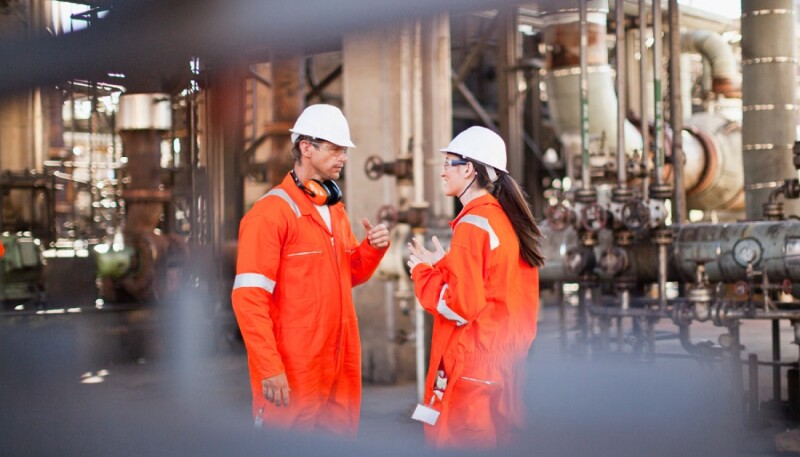As shipping works to transition from existing energy sources, the industry must proactively develop standard safeguards and control measures for the deployment of future fuels. To facilitate this, Together in Safety, a nonregulatory shipping industry safety consortium, initiated the “Future Fuels Risk Assessment,” a cross-industry study with nine partners to evaluate potential operational risks of liquefied natural gas (LNG), methanol, hydrogen, and ammonia.
“Together in Safety was established 3 years ago with the principal objective to protect seafarers’ lives while delivering improved business efficiency and commercial effectiveness,” said Grahaeme Henderson, the chair of Together in Safety. “As the shipping industry safety coalition, Together in Safety represents a new approach with shipping industry groups, companies, and service providers working in collaboration by combining their collective knowledge and expertise on challenges for the benefit of all.”
The collaborative study, which involved a series of hazard identification (HAZID) workshops across a set of operational scenarios based on a standard tanker design, found that, of the four fuels reviewed, methanol poses the least overall risk, followed by LNG, hydrogen, and ammonia.
The HAZID risk ratings of the fuels were assessed from a series of “what if” scenarios within four categories: navigation, external events, ship operations, and bunkering.
Methanol scored the lowest risk ratings within navigation-related scenarios, such as loss of maneuverability, excessive motions, or a blackout at sea, as well as in scenarios related to ship operations (other than bunkering), notably cargo operations in case of damage to equipment or vent mast and crew changes during vessel handovers. Methanol also scored the lowest (i.e., “broadly acceptable”) risk ranking in the external event scenario of hull breach from ship collision. However, within bunkering scenarios, such as leaks or loss of containment, LNG and hydrogen held “broadly acceptable” risk scores.
Both LNG and hydrogen scored nearly identical risk rankings in all scenarios studied by the HAZID team, with none falling within the “intolerable risk” domain. LNG fared better than hydrogen in one navigation scenario of vessel abandonment because of a loss of tank pressure control, tank breach, or loss of propulsion. It should also be noted that there are well established international regulations for the use of LNG as fuel on board ships, whereas, for hydrogen, no such regulations or guidance are available for either its usage as fuel or storage in the marine environment. For the purpose of the study, the HAZID team only considered cryogenic liquid hydrogen.
Across all the fuels, there are several medium risk ratings accepted as “tolerable,” but the study indicated that efforts must ensure that risks are reduced to as low as reasonably practicable.
Ammonia scored “broadly acceptable” risk as a potential source of ignition in the scenario of tug support or third-party vessel attendance at sea. Some risks for ammonia as a fuel, however, are classified as high (i.e., “intolerable”) in navigation scenarios such as grounding or collision leading to a hull breach, cargo operations in case of damage to equipment or vent mast, and leaks or loss of containment during bunkering. To bring these hazards down to medium- or a low-risk ratings, the study offers recommendations for ammonia usage. These include safety equipment for seafarers if there is a risk of gas pocket formation; dedicated emergency training for crew on fuel system safety devices and mitigating damage to fuel system scenarios; and guidelines on fuel system designs that mitigate risks from grounding or collisions.
The Future Fuels Risk Assessment study partners include APM Terminals, Carnival, Chevron, Euronav, Lloyd’s Register, Maersk, MSC Ship Management, the Oil Companies International Marine Forum, and Shell.

